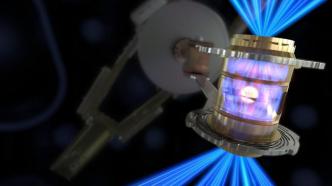TAE Technologies, a private fusion energy company in the United States, and scientists from the University of California have jointly developed a new type of nuclear fusion device called "Norm". This device is not only expected to increase the fusion power to 100 times that of traditional devices, but also to cut the operating costs by half, bringing new hope for mankind to realize the dream of nuclear fusion clean energy. The relevant paper was published in the latest issue of Nature Communications.
For decades, scientists have been trying to find a way to make fusion reactors generate electricity. Despite recent progress, it may still take years for fusion reactors to achieve commercial power generation, mainly due to low efficiency and high cost. The research team said that the Norm device has made progress in solving these two problems through innovative improvements to the field reversal configuration (FRC) technology.
To produce a fusion reaction, you first need to generate plasma, which is very hot. Currently, most controlled nuclear fusion uses a strong magnetic field to confine high-temperature plasma. Traditional technology generates a magnetic field around the plasma generation area, but it consumes a lot of electricity. As a magnetic confinement technology, FRC technology has the advantages of plasma self-organization to form an internal magnetic field.
The newly released Norm device uses neutral beam injection technology to directly generate, heat and stabilize plasma in the center of the device. This solution has three major advantages: first, the plasma forms an internal magnetic field autonomously, which greatly reduces the need for external magnets and improves energy efficiency; second, the linear structure makes the device easier to build and maintain; third, under the same magnetic field strength and plasma volume, the fusion power output is stronger.
TAE Technologies claims that the new technology is expected to make the power generated by fusion reactors reach 100 times that of other tokamak devices and reduce operating costs by 50%. Moreover, the new device has a simple structure and is easy to build, laying the foundation for improving the economic competitiveness of nuclear fusion technology and achieving commercialization.
It is worth noting that the new method also increases the possibility of using hydrogen-boron as reactor fuel. Compared with traditional nuclear fuels, hydrogen-boron fuel has a wide range of sources: hydrogen exists in water, and boron is abundant on Earth. Moreover, no neutrons are produced during the reaction, reducing the generation of radioactive waste.
(Original title: "New device is expected to increase nuclear fusion power by a hundred times")


